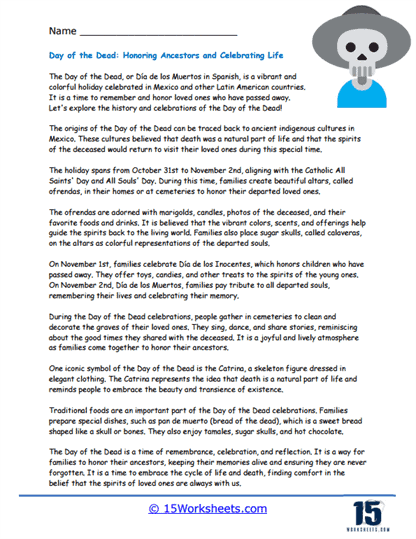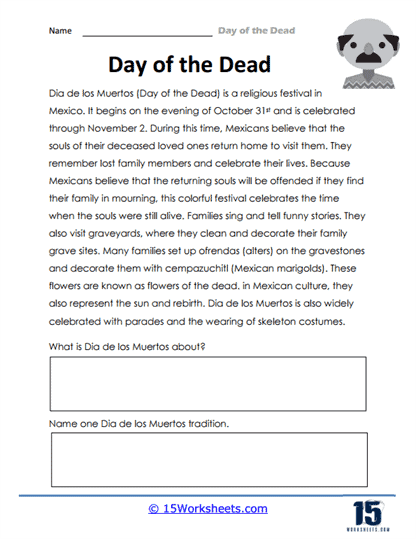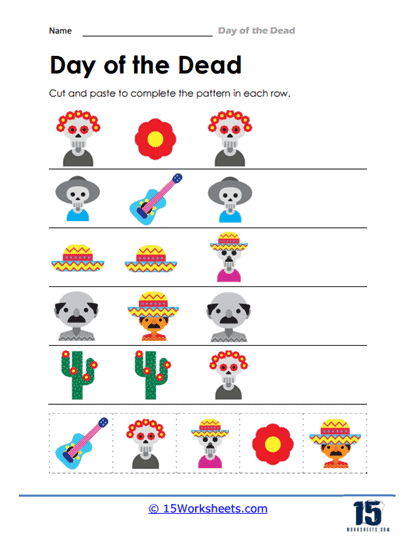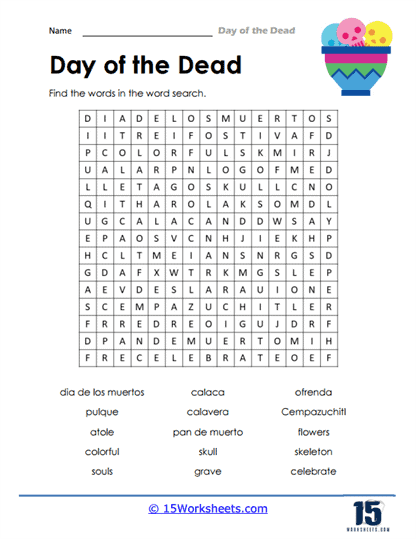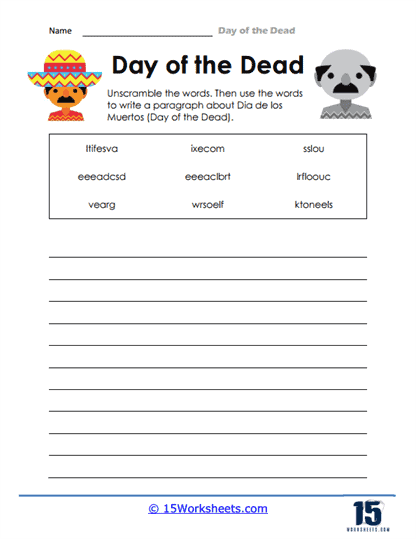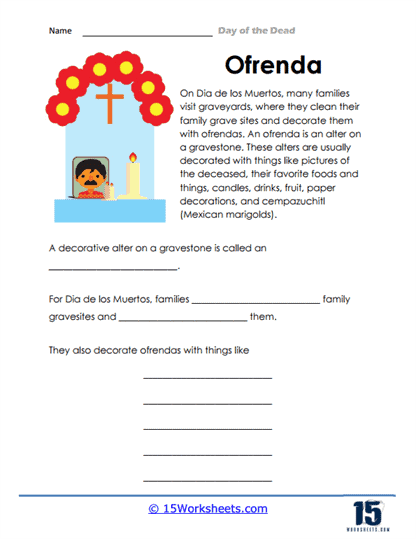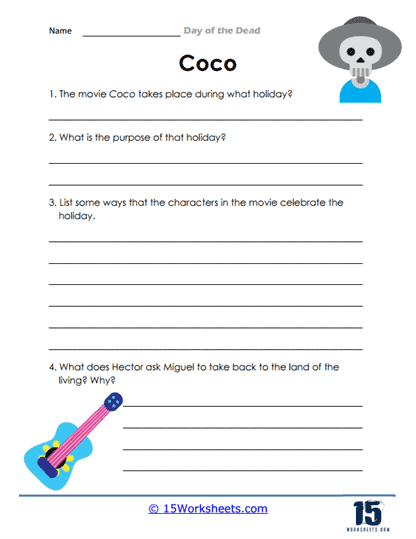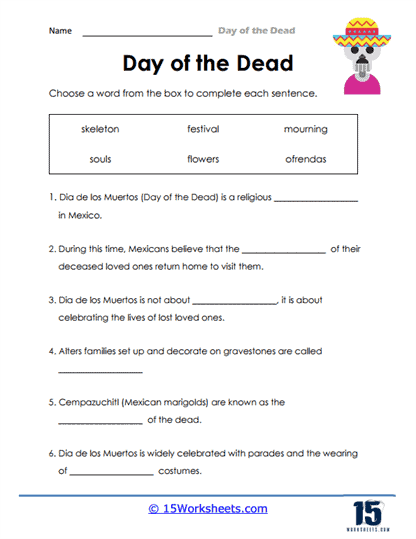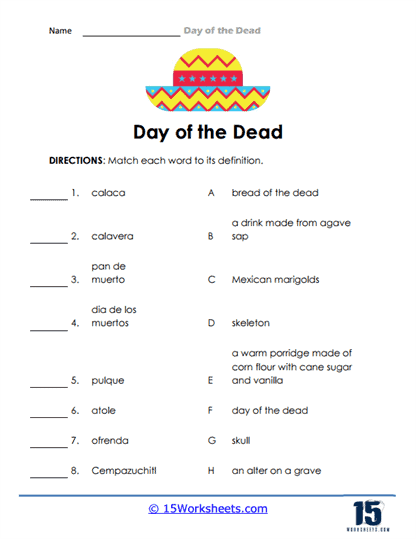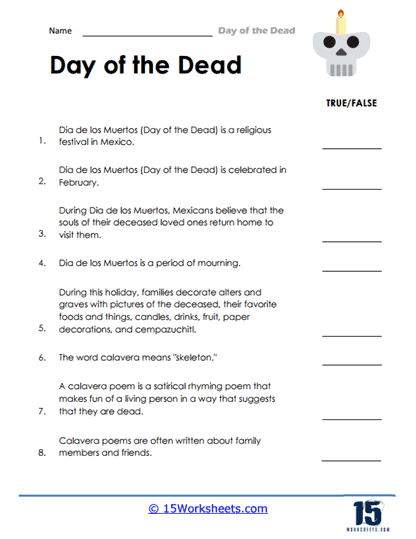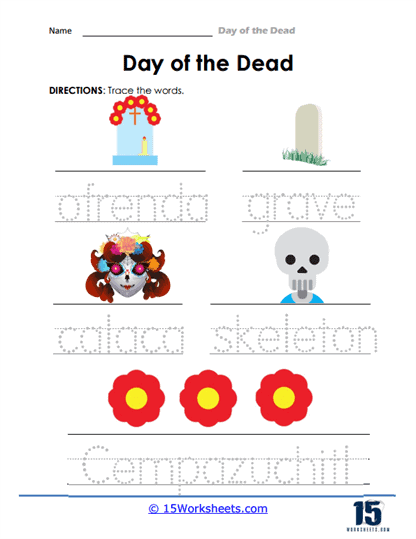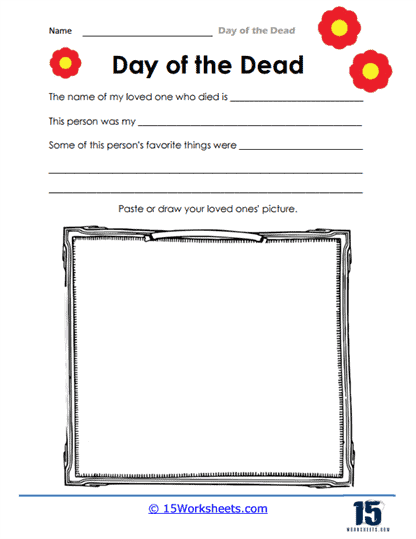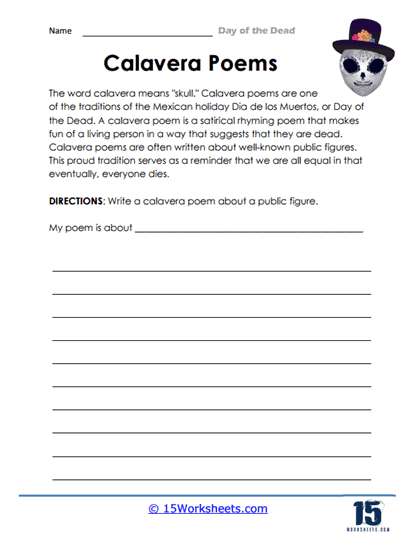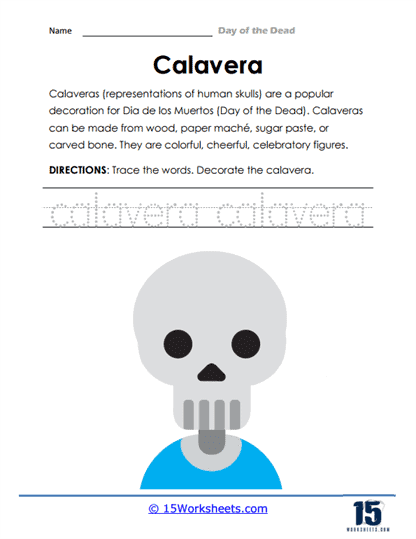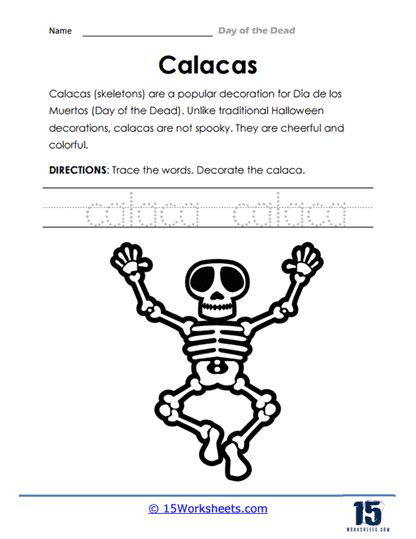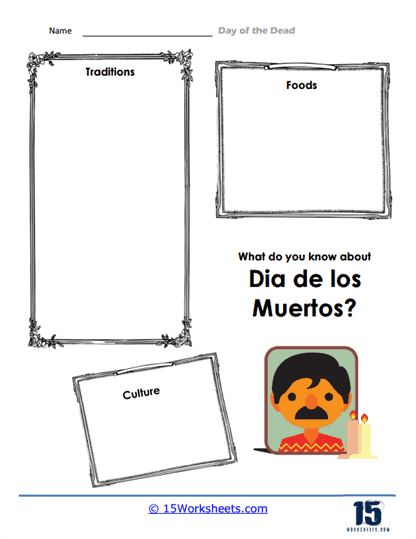Day of the Dead Worksheets
All About These 15 Worksheets
This series of 15 worksheets is an engaging and educational resource designed to immerse students in the rich traditions and cultural significance of the Day of the Dead, a vibrant Mexican holiday. These worksheets provide them with an opportunity to learn about the history, customs, and symbolism associated with this unique celebration. Through various activities, they will deepen their understanding of the Day of the Dead while fostering cultural appreciation, critical thinking, and creativity. Through these worksheets, students will:
- Learn about the indigenous roots of the holiday, and be familiar with the traditions associated with it;
- Complete fun and creative activities with themes surrounding this holiday, fostering creativity and appreciation for its traditions;
- Enrich their vocabulary skills through word exercises to expand their understanding of the terminology associated with this holiday;
- Explore the significance of altars (ofrendas) in Day of the Dead celebrations;
- Answer writing prompts about a movie that shows the cultural significance of the Day of the Dead;
- And learn about the history and symbolism of calaveras and calacas, and create their own artwork or compose poems inspired by the holiday.
This series provides an immersive and educational resource for students to explore and appreciate the cultural significance of this vibrant Mexican holiday. Through activities encompassing historical context, altar design, art and poetry, vocabulary building, and personal reflection, students will deepen their knowledge, foster cultural appreciation, and enhance critical thinking skills. Overall, these worksheets promote cultural diversity, empathy, and understanding, fostering a sense of celebration and inclusivity among students.
What is the Day of the Dead?
The Day of the Dead, or Día de los Muertos in Spanish, is a Mexican holiday celebrated throughout Mexico and by people of Mexican heritage around the world. It is a multi-day celebration that typically takes place from October 31st to November 2nd. The holiday is a time for families and friends to honor and remember deceased loved ones, celebrating their lives and the memories they left behind.
The Day of the Dead has its origins in the indigenous cultures of Mexico, dating back thousands of years. It combines elements of these pre-Hispanic traditions with Catholic beliefs, particularly the observance of All Saints’ Day (November 1st) and All Souls’ Day (November 2nd), which were introduced by Spanish colonizers.
During the celebration, families create ofrendas or altars, which are decorated with flowers, candles, photographs, and the favorite food and beverages of the deceased. They also visit the graves of their loved ones, cleaning and decorating them with offerings. Traditional elements of the Day of the Dead include calaveras (sugar skulls), marigolds, and pan de muerto (bread of the dead). These items, along with other symbols and rituals, serve to honor and remember the dead, as well as to express the belief in the cycle of life and death.
In recent years, the Day of the Dead has gained popularity and recognition outside of Mexico, with many cities around the world hosting their own celebrations and incorporating elements of the holiday into their local cultures.
The Day of the Dead and Halloween are separate holidays with different origins, customs, and meanings, but they share some similarities and a close proximity in the calendar. Both holidays occur at the end of October and the beginning of November, a time that has been traditionally associated with the thinning of the veil between the living and the dead in many cultures.
Halloween, also known as All Hallows’ Eve, is celebrated on October 31st and has its roots in the ancient Celtic festival of Samhain. The Celts believed that on this day, the boundary between the worlds of the living and the dead became blurred, allowing spirits to cross over. To ward off any malevolent spirits, they would wear costumes, light bonfires, and leave offerings. With the spread of Christianity, some of these pagan customs were incorporated into the Christian celebrations of All Saints’ Day (November 1st) and All Souls’ Day (November 2nd).
The Day of the Dead, as previously mentioned, is a Mexican holiday with origins in indigenous Mesoamerican beliefs and practices that were later influenced by Catholicism. It is a multi-day celebration from October 31st to November 2nd, focused on remembering and honoring deceased loved ones.
While the two holidays are distinct and have different origins, they both involve remembering the deceased and share in some common themes, such as the use of costumes, decorations, and offerings. Additionally, both holidays have been influenced by the blending of pagan and Christian beliefs. However, the Day of the Dead is characterized by colorful and lively celebrations that emphasize the cycle of life and death, whereas Halloween is more focused on spooky themes and has evolved into a secular holiday with activities like trick-or-treating, costume parties, and watching horror films.

